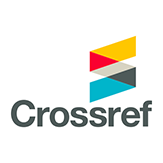Cost Effectiveness Analysis Between Hemodialysis and Peritoneal Dialysis
Abstract
Abstract The number of patients with End Stage Renal Disease (ESRD) in Indonesia is growing. Increasing prevalence of hypertension and diabetes mellitus contributes to higher prevalence of ESRD. The majority of patients (94%) with ESRD are undertaking hemodialysis (HD) at public and private hospitals. However, continuous ambulatory Peritoneal Dialysis (PD) has been prescribed to small portion of patients with ESRD. The aim of this study was to examine the cost effectiveness between HD and PD on ESRD patients. This study compared 78 HD patients at Hospital X in Bogor and 10 PD patients at Hospital Y in Jakarta. Patient’s quality of life (QoL) was measured using SF 36 questionnaires. The costs were measured by direct medical costs using CBGs prices, direct non-medical costs (transportation, food for patient and family), and indirect medical costs (opportunity costs). The study found that the HD cost per year per patient was IDR 133.4 million and the comparative cost for PD was IDR 81.7 million. The study found lower QoL of HD patients (46.2%) compared to QoL of PD patients (90%). In addition, PD patients had significant better quality of physical activities, emotional states, social function, and sanity. The study found the incremental costs for to HD to reach similar emotional states was IDR 2.0 million compared to PD and IDR 1.8 million for extra physical role gained. It is concluded that PD was more cost-effective than HD in achieving a certain level of quality of life among patients with ESRD in two hospitals in Indonesia. Abstrak Jumlah pasien Gagal Ginjal Stadium Akhir (GGSA) di Indonesia terus meningkat. Meningkatnya prevalensi hipertensi dan diabetes mellitus (DM) berkontribusi terhadap prevalensi kasus GGSA. Mayoritas pasien (94%) dengan GGSA menjalani terapi hemodialisis (HD) baik pada Rumah Sakit (RS) swasta ataupun pemerintah. Bagaimanapun, dialisis peritoneal ambulatori berkelanjutan (continuous ambulatory peritoneal dialysis/CAPD) telah diberlakukan pada sebagian kecil pasien dengan GGSA. Tujuan dari studi ini adalah untuk mengukur efektivitas harga dari HD dan CAPD pada pasien GGSA. Studi membandingkan 78 pasien HD di RS X Bogor dan 10 pasien CAPD pada RS Y Jakarta. Kualitas hidup pasien diukur menggunakan kuesioner 36. Biaya diukur dengan biaya langsung medis (menggunakan harga CBGs), biaya langsung non-medis (transportasi dan biaya makan), serta biaya medis tidak langsung (biaya kesempatan). Studi menunjukkan bahwa HD membutuhkan biaya Rp 133,4 juta per orang per tahunnya, dibandingkan dengan CAPD sebanyak Rp 81,7 juta. Studi menemukan kualitas hidup yang lebih rendah pada pasien HD (46,2%) dibanding CAPD (90%). Selain itu, pasien CAPD memiliki kualitas yang lebih baik dari segi aktivitas fisik, status emosi, fungsi sosial, dan kejiwaan. Studi menemukan bahwa harga inkremental HD, untuk mencapai status emosional yang sama, dibanding CAPD yakni sebanyak 2 juta rupiah; dan 1,8 juta rupiah untuk mencapai peran fisik bila HD dibanding dengan CAPD. Dapat disimpulkan bahwa CAPD lebih efektif dari segi biaya dibanding HD dalam mencapai tingkatan kualitas hidup yang lebih baik pada pasien-pasien GGSA di dua RS di Indonesia.
Keywords
cost-effectiveness analysis; End stage renal diseases; dialysis
DOI: 10.7454/eki.v1i3.1776
Refbacks
- There are currently no refbacks.








